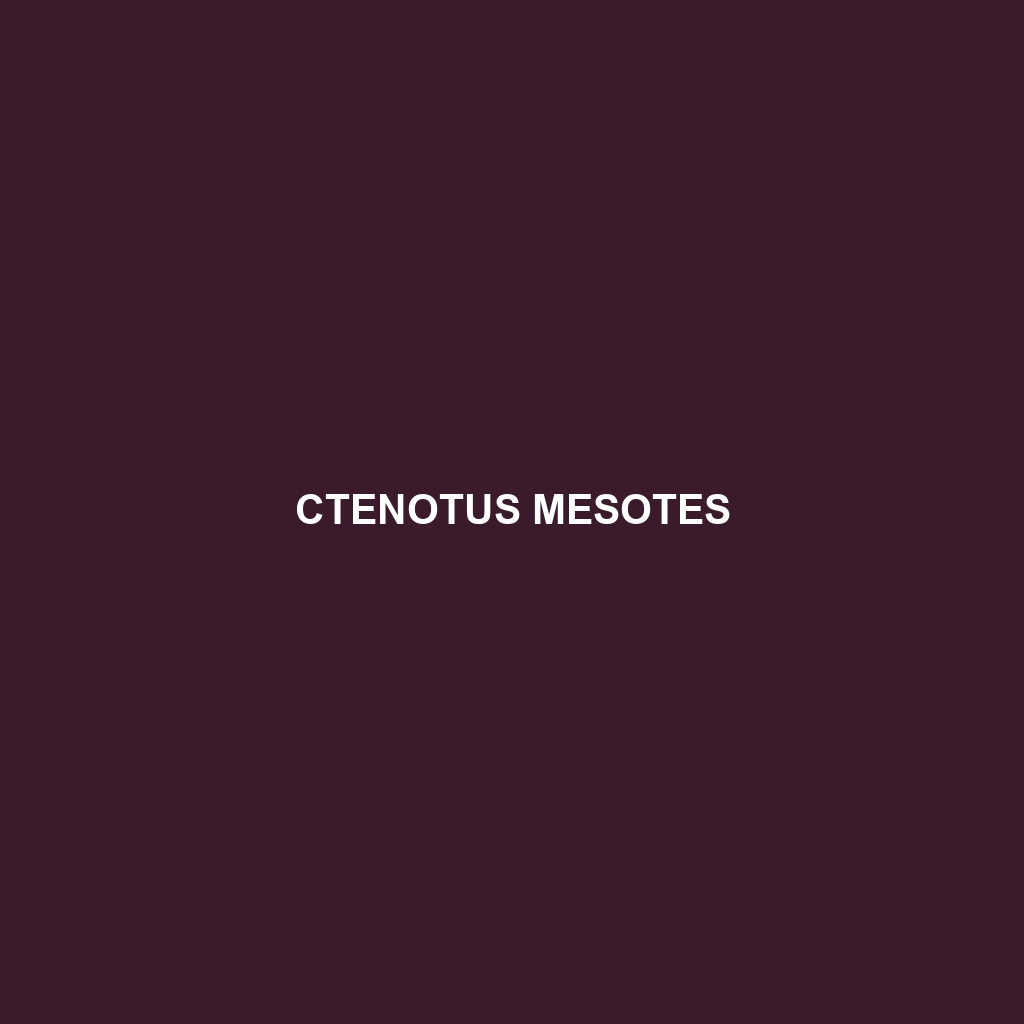Ctenotus mesotes – Species Description
Common Name: Ctenotus mesotes
Scientific Name: Ctenotus mesotes
Habitat
Ctenotus mesotes primarily inhabits the arid regions of Australia, particularly found in the southeastern parts of the continent. These skinks thrive in sandy or rocky environments, preferring open grasslands, shrublands, and sparse woodlands. Their adaptability to various habitats makes them relatively widespread within their geographical range.
Physical Characteristics
This species typically measures between 10 to 15 centimeters in length. Ctenotus mesotes is characterized by its smooth, slender body covered with glossy scales. The coloration includes a mix of brown and tan, often displaying distinctive banding patterns that provide effective camouflage against the arid landscape. Notably, the skink has elongated limbs and a tapered tail, which is a common feature among Ctenotus species.
Behavior
Ctenotus mesotes is known for being a diurnal species, actively foraging during the day. They exhibit burrowing behavior, often retreating into sandy substrates to escape predators or extreme temperatures. These skinks are also territorial, displaying aggressive behaviors toward intruders in their habitat, which can be an interesting aspect of their social structure.
Diet
The diet of Ctenotus mesotes predominantly consists of insects, such as crickets, ants, and small beetles. They showcase opportunistic feeding habits, preying on whatever small invertebrates are available in their surroundings. This insectivorous diet plays a significant role in controlling pest populations within their ecosystem, highlighting their importance in the food web.
Reproduction
Ctenotus mesotes typically breeds in the warmer months, from late spring to early summer. Females lay clutches of 2 to 7 eggs in sheltered environments, such as under rocks or in leaf litter. The incubation period lasts approximately 60 to 90 days, with hatchlings emerging well-developed and ready to fend for themselves shortly after birth.
Conservation Status
The current conservation status of Ctenotus mesotes is classified as “Least Concern” by the IUCN, though habitat destruction and climate change pose potential threats to its population. Ongoing monitoring is essential to ensure that sufficient habitat remains to support this species in the future.
Interesting Facts
Ctenotus mesotes possesses remarkable agility, allowing it to escape from predators quickly. Its ability to blend seamlessly into its environment makes it an effective ambush predator, and it is often regarded as one of the more interesting skink species due to its unique adaptations and behaviors.
Role in Ecosystem
Ctenotus mesotes plays a vital role in its ecosystem by contributing to insect population control and serving as prey for larger predators, including birds of prey and snakes. Their presence indicates a healthy environment, as they are sensitive to changes in habitat quality.

